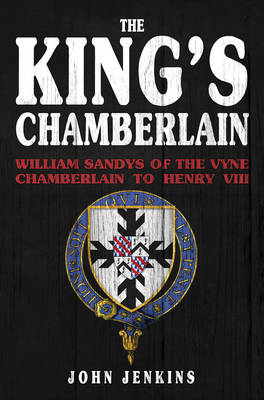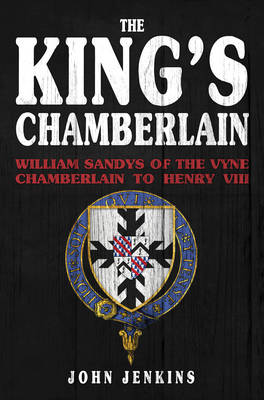
- Afhalen na 1 uur in een winkel met voorraad
- Gratis thuislevering in België vanaf € 30
- Ruim aanbod met 7 miljoen producten
- Afhalen na 1 uur in een winkel met voorraad
- Gratis thuislevering in België vanaf € 30
- Ruim aanbod met 7 miljoen producten
Zoeken
The King's Chamberlain
William Sandys of the Vyne, Chamberlain to Henry VIII
John Jenkins
Hardcover | Engels
€ 27,95
+ 55 punten
Omschrijving
This book looks at the life, activities and achievements of William, 1st Baron Sandys, Knight of the Garter. It is the story of a Hampshire man who, during the reigns of Henry VII and Henry VIII, achieved prominence from a relatively modest but well-connected position. He was very close to the centres of power throughout most of his life and was inevitably involved in the political and religious issues of the time. His relationships with Henry VIII, Catherine of Aragon, Anne Boleyn, Cardinal Wolsey, Thomas Cromwell and senior courtiers are discussed. Evidence is presented that suggests that Sandys played a role in the downfall of Anne Boleyn. From the time he fought in the battle of Stoke in 1487, where he was knighted by Henry VII, to his death, Sandys was regarded as an outstanding soldier and was feared and respected by his French opponents. He rose from Treasurer of War in the 1512 Spanish campaign and Treasurer of Calais between 1517 and 1526 to become, for the last fourteen years of his life, Chamberlain to Henry VIII. In the 1520s he built himself the Vyne mansion, which has been described as a palace and was visited by Henry VIII and Elizabeth I on multiple occasions. He also extended the Holy Ghost Chapel in Basingstoke and converted Mottisfont priory to another mansion. All were furnished to the highest standards and taste using English and Flemish craftsmen.
Specificaties
Betrokkenen
- Auteur(s):
- Uitgeverij:
Inhoud
- Aantal bladzijden:
- 320
- Taal:
- Engels
Eigenschappen
- Productcode (EAN):
- 9781398102811
- Verschijningsdatum:
- 15/12/2021
- Uitvoering:
- Hardcover
- Formaat:
- Genaaid
- Afmetingen:
- 162 mm x 238 mm
- Gewicht:
- 635 g

Alleen bij Standaard Boekhandel
+ 55 punten op je klantenkaart van Standaard Boekhandel
Beoordelingen
We publiceren alleen reviews die voldoen aan de voorwaarden voor reviews. Bekijk onze voorwaarden voor reviews.











